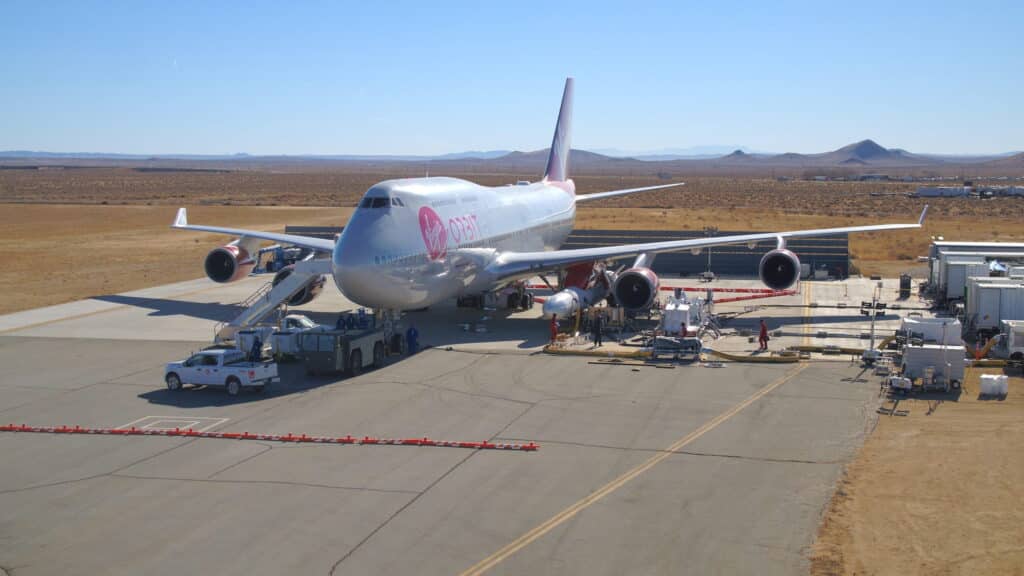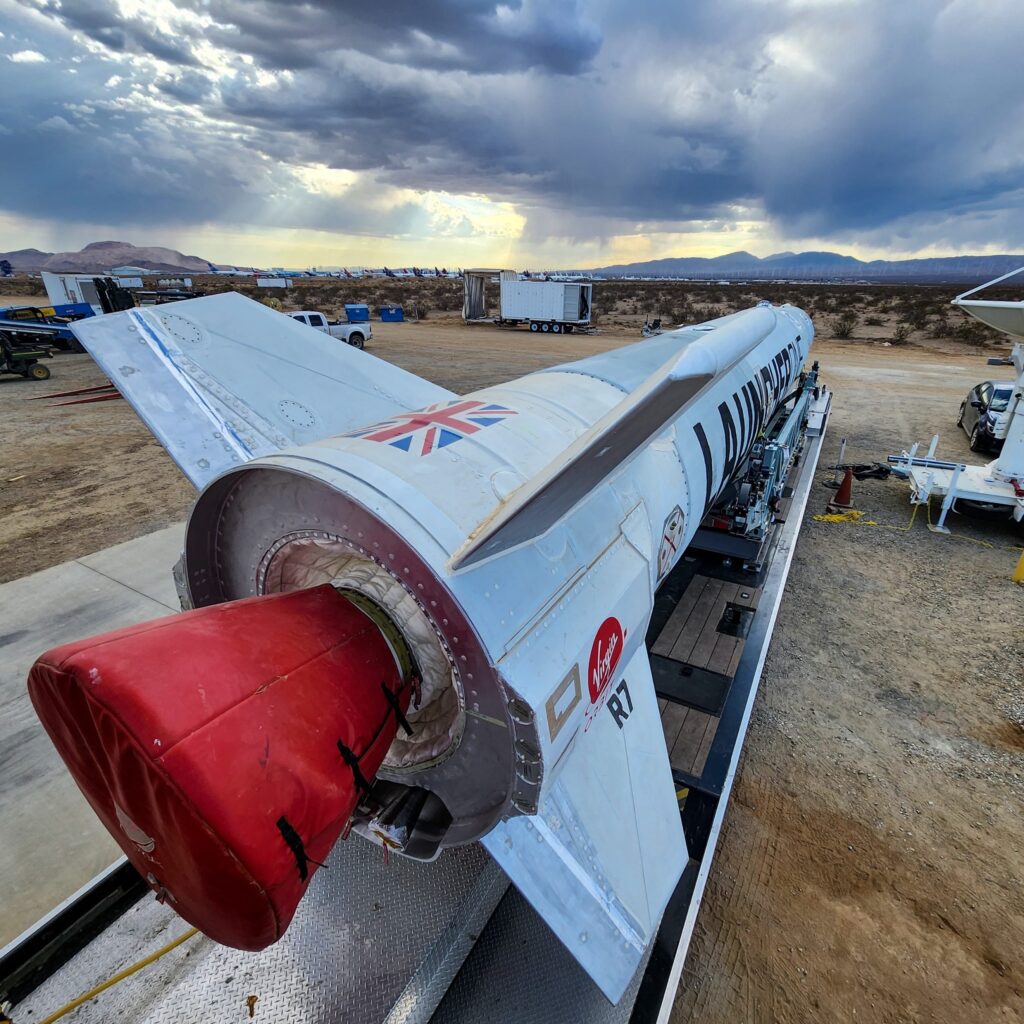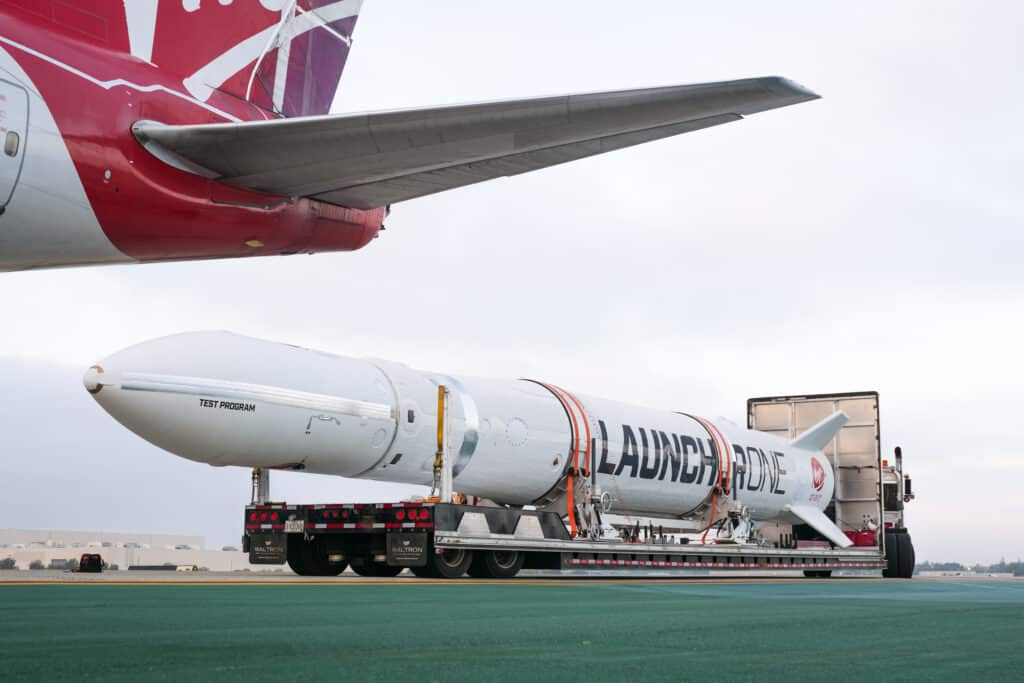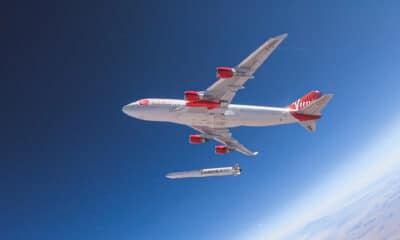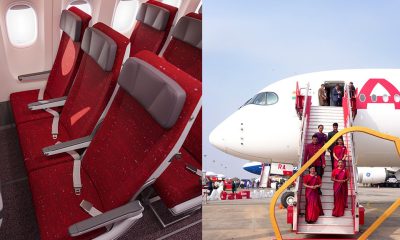Aerospace
Virgin Orbit wants to be the ‘Uber for satellites’. Its cost-effectiveness is explained.
Virgin Orbit put the satellite in Space Orbit for an affordable price. The new Uber business in the space.
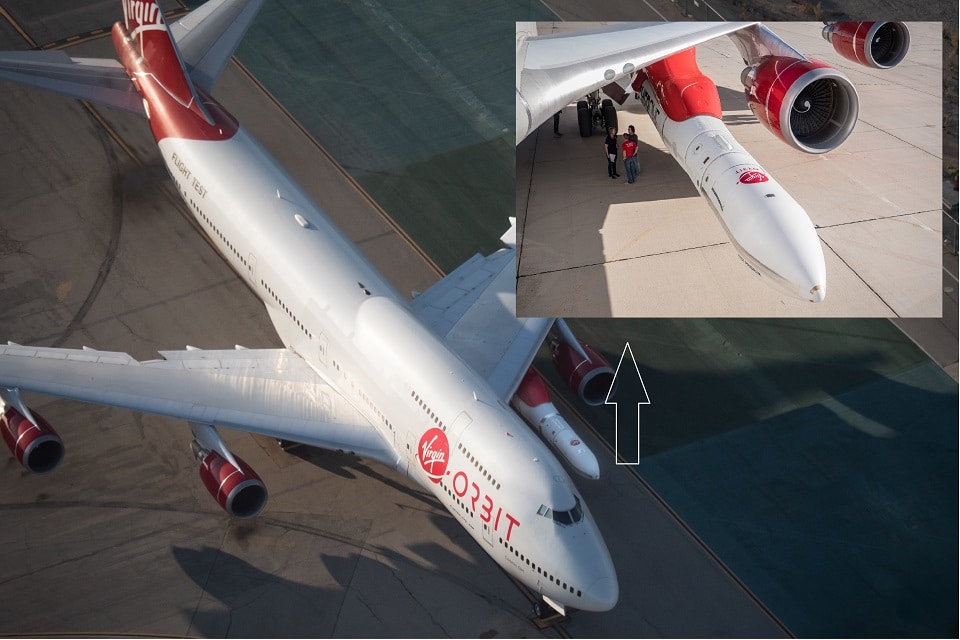
The space market is a unique market because so few businesses and organizations are engaged in it. In the past, only government-funded organizations such as NASA from the USA, Russia, India, and China—among many others—were used to send satellites into orbit. Obtaining approval to send satellites through such organizations, which also included receiving geopolitical recommendations, took a fair amount of time. however, private firms have started to enter the industry during the past ten years, like Elon Musk’s SpaceX initiative. It is currently one of the most popular space launch services. However, the same Virgin corporation is also active in the space industry as they launch satellites and rockets using Boeing 747 jumbo jets. which would be a quicker technique for starting a small version satellite.
Meet the world’s first Space Tourists to fly around the Moon(Opens in a new browser tab)
One of Virgin’s two main programs is Virgin Galactic, which runs commercial flights for tourism purposes and offers orbital tours, which are very interesting to many interested tourists. in the same time and space. one more amazon follows Blue Origin One of each was established by Jeff Bezos in the year 2000. However, Virgin is also involved in the Virgin Orbit program, providing services including mid-air rocket and satellite launches.
How Does In-Flight Wi-Fi Really Work?(Opens in a new browser tab)
How does Virgin Orbit operate?
The satellite is carried by a Boeing 747 jumbo jet and launched from a platform atop some space travel. The launches will aid in the expansion of Spire Space Services, a platform that provides customers with quick and scalable access to space through a subscription model, as well as ongoing upgrades and enhancements to the company’s fully deployed satellite constellation. They serve as an example of the growing demand for small satellites. Spire will launch to a variety of orbits, from mid-inclination to polar, all from Virgin Orbit’s first spaceport in Mojave, California, taking full advantage of LauncherOne’s proven adaptability.
Airbus Beluga delivers Airbus satellite to Kennedy Space Center(Opens in a new browser tab)
A second chance for the 747
As is acknowledged, the Boeing 747 is gradually winding down from commercial flight operations due to a decline in demand as well as the need for extensive aircraft maintenance. However, it discovered a new way of life with Virgin Orbit, where it serves as a satellite launch pad. where it will be a component of the one big space mission that greatly enhances satellite networking. In the USA, GE engines are also tested on the Boeing 747. Additionally, it plays a crucial role in the testing of new engines. It can be utilized as a test bed or as a space observatory due to its four engines.
The space’s Virgin has now evolved into UBER.
Many businesses are searching for long-term viability in the market as competition increases. Space exploration is an expensive endeavor, but once you succeed, you can manage your corporation with ease. The space program has joined the private sector in order to compete with other organizations. Virgin Orbit, founded by Richard Branson, aims to become “Uber for satellites.” To launch satellites into orbit, the business uses a rocket hung beneath the wing of a jumbo jet. The business claims its delivery approach offers a significant benefit.
Virgin Orbit and Spire Global collaborate
Spire Global and Virgin Orbit previously demonstrated the flexibility of LauncherOne’s rapid call-up capabilities with the late-load of Spire’s ADLER-1 satellite on board the Above the Clouds mission from Mojave, California in January 2022—a mission that took just 22 days from the initial call-up to payload integration. Building on that achievement, the two companies are working together to provide Spire’s international clientele with speedy and adaptable launch solutions.
Spire Global, Inc. (NYSE: SPIR), a global provider of space-based data, analytics, and space services, has entered a legally binding Launch Service Agreement with the top launch provider Virgin Orbit (Nasdaq: VORB), to purchase numerous launches over a number of years, building on their shared track record for productive collaboration in responsive space. In 2023, the first launch is anticipated.
- Spire Global has committed to purchase multiple launches from Virgin Orbit, starting in 2023.
- The launches will support Spire’s growing Space Services business as well as upgrades and enhancements to the company’s fully deployed satellite constellation.
- The launches are part of Virgin Orbit’s growing launch backlog as it heads towards its first international launch later this year from the United Kingdom.
A reasonable cost for orbiting your satellite.
Spire has now been added to Virgin Orbit’s growing list of clients that want both launch site and orbital destination flexibility. Virgin Orbit is committed to offering the commercial, academic, and governmental small satellite industries flexible, inexpensive, quick launch opportunities anytime, anywhere.
Courtesy: Virgin Orbit for more information click here.

Aerospace
China Secures Production Certificate for Mass Production of Pilotless eVTOL Aircraft

The first passenger-carrying pilotless electric vertical takeoff and landing (eVTOL) aircraft in the world, the EH216-S, has received the Production Certificate for its eVTOL aircraft from the Civil Aviation Administration of China (CAAC).
This is a significant milestone for EHang Holdings Limited, the leading UAM technology platform company in the world. This outstanding accomplishment is another big step towards mass manufacturing for the eVTOL aircraft and the ensuing commercial operations, building on the ground-breaking acquisition of the Type Certificate and the Standard Airworthiness Certificate for the EH216-S.
The PC is a crucial certificate that the aircraft maker receives from the CAAC, the country’s aviation authority. By obtaining this certificate, EHang has demonstrated that it has set up a quality management system for mass production that satisfies the airworthiness regulation standards set forth by the CAAC, and the company has been given permission to continue producing mass quantities.
It is also a strong guarantee of the calibre of the goods made by EHang. Raw materials, supplier management, manufacturing organisation, production quality control, aircraft pre-delivery test, after-sales repair and maintenance, etc. are all included in the mass production quality management system for the EH216-S.
To ensure that every aircraft and its components that roll off the production line strictly adhere to the approved type design and safety requirements, the system sets clear guidelines and documentation for every step in the production procedure. This ensures comprehensive traceability and safety control.
Aerospace
Four Airbus A380 Superjumbos lined up to be scrapped

In a strategic move aimed at reclaiming valuable resources from the iconic Airbus A380 aircraft, VAS Aero Services and Dr. Peters Group have announced a significant collaboration.
This partnership marks a milestone in aviation logistics and aftermarket services, with four of these colossal planes slated for teardown and redistribution of used serviceable material (USM).
The venture between VAS Aero Services, renowned for its expertise in aircraft dismantlement, and Dr. Peters Group, a prominent Germany-based investment fund management firm, underscores a commitment to sustainable aviation practices. This isn’t their first foray into scrapping A380s; their successful partnership has already seen the dismantlement of these aircraft, making them pioneers in this niche.
Under the agreement, the latest consignment brings the tally to eight A380s entrusted to VAS by Dr. Peters Group. Managing Director Christian Mailly of Dr. Peters Group emphasized the trust placed in VAS, citing their unparalleled capabilities in dismantlement and aftermarket sales network. It’s a strategic move in response to the growing demand for quality USM parts, particularly with the resurgence in reliance on the A380.
Notably, the teardown process will be carried out at various locations, optimizing the positioning of harvested parts to cater to different markets. While some parts will be positioned in Europe to support operators in the region and the Middle East, others will remain in the Asia-Pacific region. This meticulous strategy ensures efficient access to spare parts, benefiting MROs and airlines across these markets.
The decision to retire these A380s comes at a time when operators are reassessing fleet strategies amidst evolving market dynamics. Despite initial plans for quick retirement due to the emergence of more fuel-efficient alternatives, factors such as a rebound in long-haul demand and delays in new widebody deliveries have prompted operators to reconsider. The A380, with its unique capacity and capabilities, presents a practical solution for short-term capacity management.
Aerospace
Rolls-Royce Launches Test Flights for Revolutionary Pearl 10X Engine
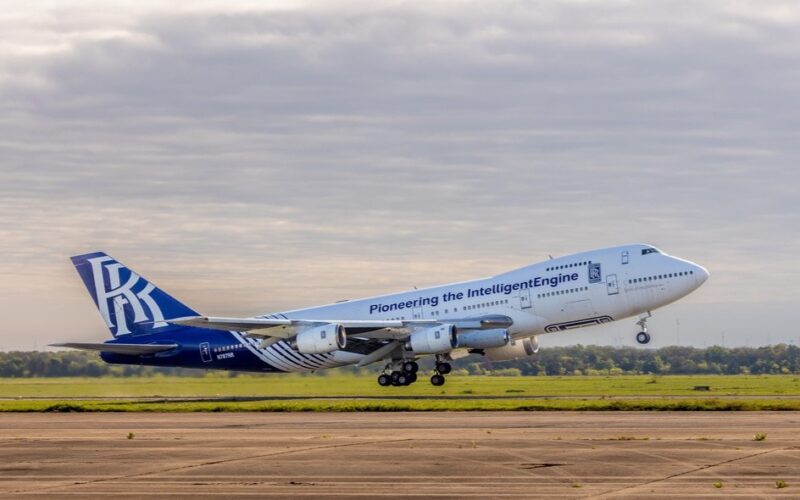
Rolls-Royce reports that the company’s dedicated Boeing 747 flying testbed has seen the successful start of the Pearl 10X, their newest aero engine designed for the business aviation industry.
Dassault, a French aircraft manufacturer, has decided to use this engine only to power their newest flagship, the Falcon 10X. As stated at last year’s Capital Markets Day, the commencement of flight testing represents a significant milestone for both Rolls-Royce and the Pearl 10X programme as the company concentrates on expanding in the business aviation industry.
The first Rolls-Royce engine to power a Dassault business jet is the Pearl 10X, the newest engine in the state-of-the-art Pearl engine family. The Pearl 10X was chosen by the French aircraft manufacturer as their new flagship model, demonstrating even more of Rolls-Royce’s dominance in the business aviation engine market.
Over the next few months, pilots and flight test engineers from Tucson, Arizona, USA, will put the engine through its paces. The flight test programme will comprise testing of the nacelle’s anti-icing system, in-flight relights, engine performance and handling checks at various speeds and altitudes, and fan vibration tests at various altitudes.
The new auxiliary gearbox, which enables higher additional power extraction, and the ultra-low emissions ALM combustor, which is compatible with 100% Sustainable Aviation Fuel (SAF), have undergone extensive testing as part of the ground-based development programme thus far. The engine will be the most potent business aviation engine in the Rolls-Royce lineup. It exceeded its intended thrust levels during the very first test run. With over 2,300 testing hours successfully completed on the Pearl 10X engine configuration as well as the Advance 2 demonstration, the programme is moving forward at a rapid pace.
With the most economical engine core available for business aircraft, the Advance2 engine, coupled with a high-performance low-pressure system, gives the Pearl 10X an exceptional thrust of over 18,000 lbf. With a 5% increase in economy over the previous generation of Rolls-Royce commercial aviation engines, the Pearl 10X

